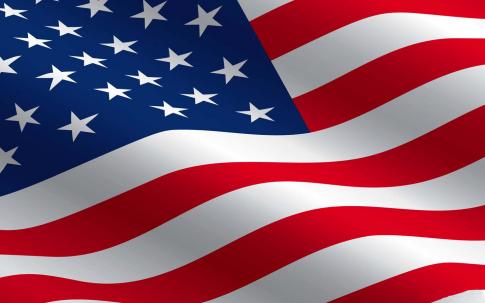Donald Trump and the shape of things to come

The radically transformative nature of Trumpian foreign policy has emerged with increasing clarity. It is a latter day Great Powers spheres-of-influence framework.
John Weeks
Before the end of 2017, the post-World War II global order of US hegemony will run its course, and authoritarianism will drive domestic policy.
In March 1861, Abraham Lincoln replaced pro-slavery James Buchanan (who had defeated abolitionist John C. Frémont in 1856). A month later, the hastily formed southern rebel government attacked a US fort in the harbour of Charleston, South Carolina, and the civil war began.
72 years later on 4 March 1933, Herbert Hoover yielded the presidency to Franklin Delano Roosevelt whose administration during the famous ‘first hundred days’ would create the American version of social democracy (“welfare state lite” with an electoral base in the trade unions), as well as lay the basis for US global hegemony.
The inauguration of Donald Trump on 20 January (date brought forward from March by the Twentieth Amendment to the US constitution) will qualify as the third seismic change in the American political order. Before the end of 2017, the post-World War II global order of US hegemony will run its course, and authoritarianism will drive domestic policy.
As we debate what will happen, we should be clear on what will not occur. Donald Trump will not be removed from office (except by illness or death). The US criminal code does not apply to presidents, whose removal can only occur through a Congressional process called “impeachment” for transgressions involving “treason, bribery, and other high crimes and misdemeanors” (Article 1 of the US Constitution).
First, the House of Representatives must by majority vote pass a Bill of Impeachment to mandate a trial of the president before the US Senate with the Chief Justice of the Supreme Court presiding. Because Republicans outnumber Democrats in the House 241 to 194, the likelihood of this is extremely low.
If by some means would-be impeachers convinced 24 Republican members of the House to join unanimous Democrats for the necessary 218 majority, an insurmountable hurtle would remain. Conviction of a president requires a two-thirds majority of all 100 Senators. Because the US Senate now has 52 Republicans, impeachment of Donald Trump would need 19 of them to turn on their party’s sitting president. Place no bet on this happening at odds less favourable than a million to one.
In a campaign speech in Iowa a year ago Donald Trump famously boasted, “I could stand in the middle of Fifth Avenue and shoot somebody, and I wouldn’t lose any voters”. Even more confidently he could make the same statement with “be impeached” replacing the last three words.
With president Trump a fixture in the White House until at least 20 January 2021, we can infer the obvious developments over the coming four years. The first step toward informed speculation is recognition that his cabinet appointments are window dressing to create the illusion of a normal presidency.
The amazingly outrageous appointments serve to satisfy his various far-right constituencies (a union-buster for Secretary of Labor, an anti-civil-rights Attorney General, a climate change denier for the Department of the Environment, and so on). The appointees will have considerable spare time. Trump will run the presidency as he has his not-always-successful business ventures: secretively, with an inner circle. The major role for his son-in-law, perhaps to become special envoy for the Middle East, provides the guide to how the new president will decide policy.
After World War II, overwhelming economic and military power allowed US governments to assert a Pax Americana (more Americana than Pax) that briefly in the 1990s became Imperium Americana. Barack Obama sought to maintain a twenty-first century version of the Pax, with little success.
The radically transformative nature of Trumpian foreign policy has emerged with increasing clarity. It is a latter day Great Powers spheres-of-influence framework. Trump’s apparent friendship with the Russian dictator and insults for the Chinese regime come straight from his Art of the Deal – make an alliance of convenience with the weaker competitor against the stronger one.
In practice this implies leaving Vladimir Putin to do as he wishes in Ukraine and the rest of the “Russian near abroad”, and perhaps in Syria as well. Having at least postponed conflict with the Russian regime, Trump can attempt his infamous negotiating technique with the Chinese leadership – denounce and deny all previous agreements and understandings, make outrageous demands no one would accept, then extract unheard-of concessions from the shell-shocked opponent.
Whether this approach will prove as successful in geopolitics as in business bargaining is open to question. I hope Trump-the-president realizes that unlike in real estate, he cannot escape from a foreign policy failure by declaring bankruptcy and moving onto the next deal.
We can also see the Trumpian parameters for domestic policy emerging. An intensification of the on-going Republican restriction of voting rights is central to Donald Trump’s re-election. By the standards of almost every democracy in the world, Hillary Clinton won the 2016 presidential election (taking 65.8 million votes compared to Trump’s slightly less than 63 million).
Trump took 58% of ballots by voters of European descent, which gave him victory in the Electoral College. More limits to voting by non-European Americans will facilitate Trump’s re-election. Not withstanding three constitutional amendments protecting voting rights (15th, 19th and 26th), many state legislatures have recently enacted restrictive legislation that the conservative Supreme Court is unlikely to strike down.
I foresee a Trump presidency as aggressively pursuing a sphere of influence, foreign policy and holding power through increasingly authoritarian domestic governance, with all key decisions made by a handful of insiders. A transformation presidency, indeed./OD




 del.icio.us
del.icio.us Digg
Digg

Post your comment